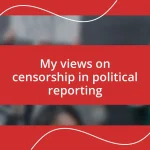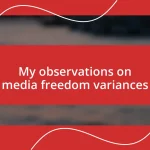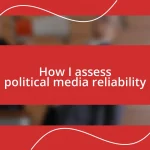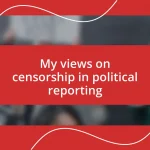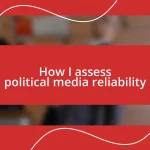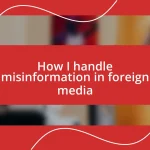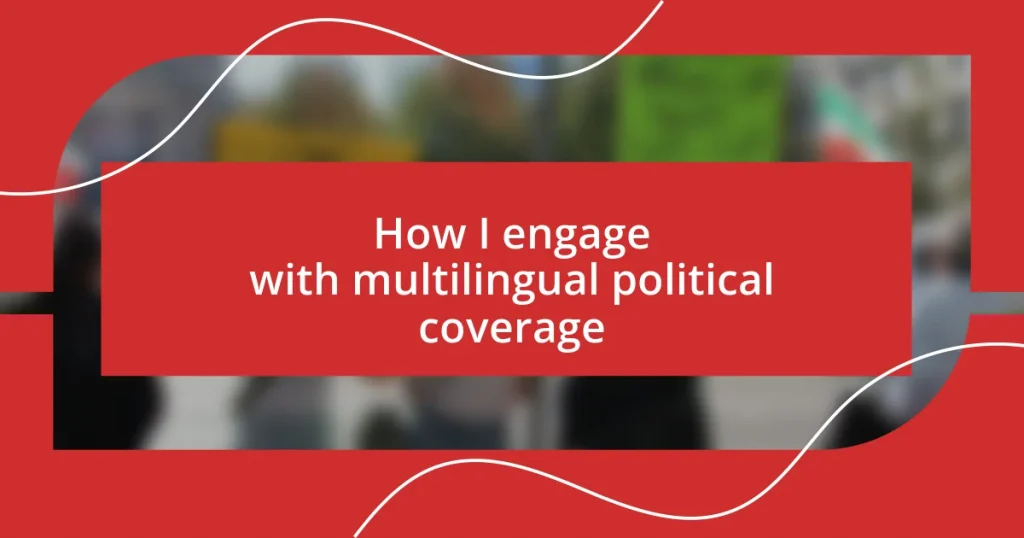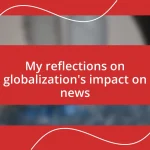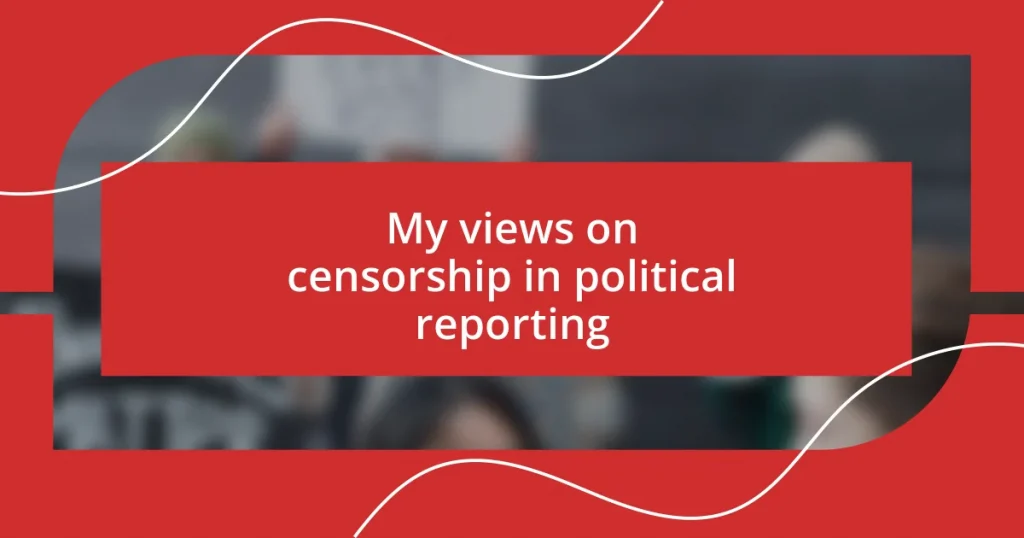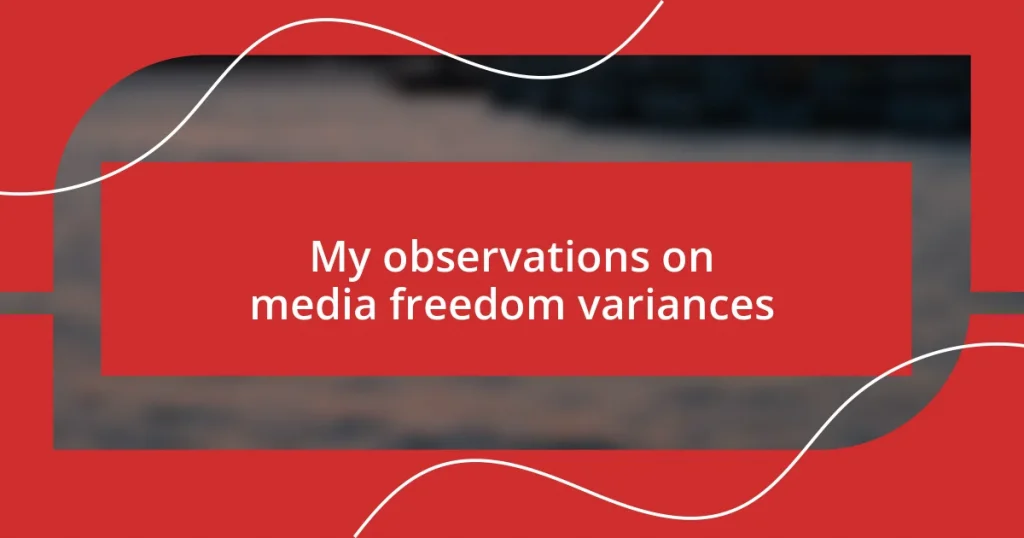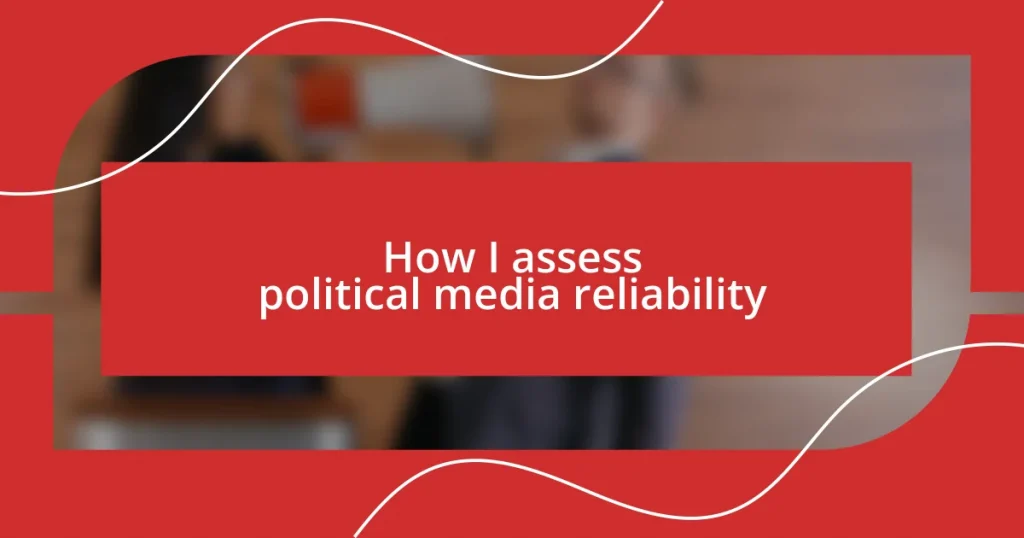Key takeaways:
- Engaging with multilingual political coverage enhances understanding by exposing cultural biases and diverse perspectives on global events.
- Utilizing diverse media sources and participating in multilingual discussions fosters richer dialogues and critical thinking, challenging echo chambers.
- Active strategies, such as note-taking and comparing narratives, are essential for deeper comprehension of political issues across different languages.
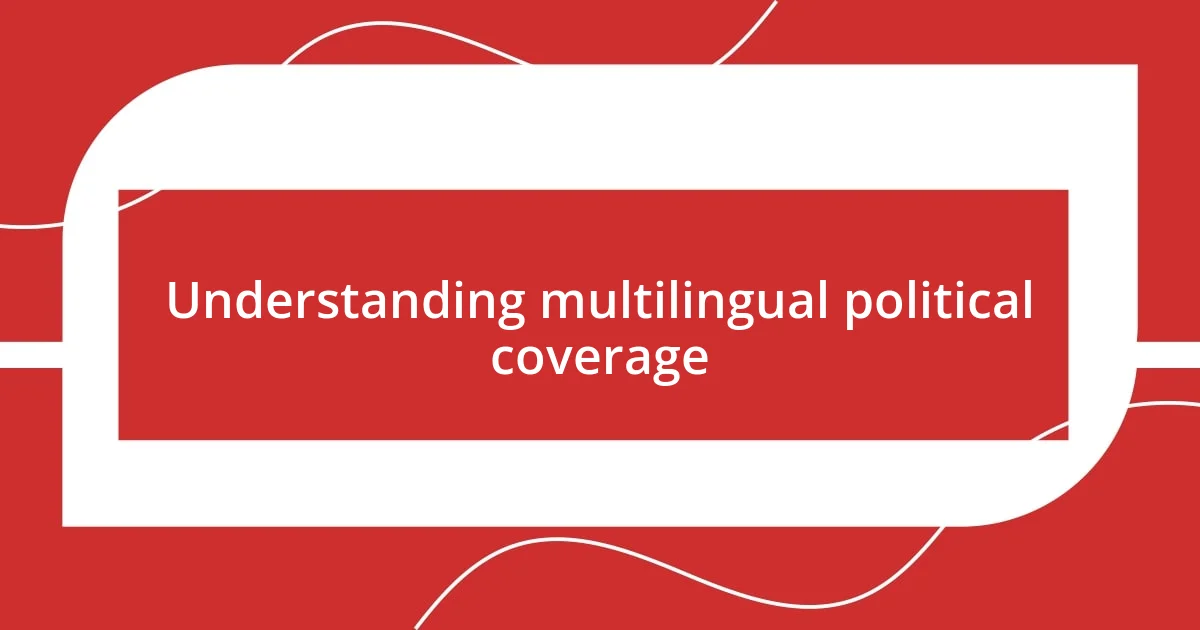
Understanding multilingual political coverage
When I first began exploring multilingual political coverage, I was struck by how varying interpretations can shape our understanding of global events. I vividly remember watching a debate where different news outlets presented starkly contrasting narratives, leaving me wondering how much was lost in translation. Isn’t it fascinating how language not only conveys facts but also reflects cultural perspectives?
Diving deeper into this world, I found that multilingual coverage often exposes biases that we might overlook in a single language. For example, while reading analyses from Spanish, French, and English sources, I encountered distinct emphases on issues like immigration and climate change. This diverse prism of viewpoints made me reflect—how do these differing narratives affect public opinion?
Engaging with multilingual political content can feel overwhelming at times, but I’ve learned that it enriches my perspective. I recall a moment during a discussion with friends from different cultural backgrounds; we shared our interpretations of a foreign election. It was eye-opening to see how our experiences colored our viewpoints. Isn’t it crucial to consider these varied voices to truly grasp the complexity of political landscapes?
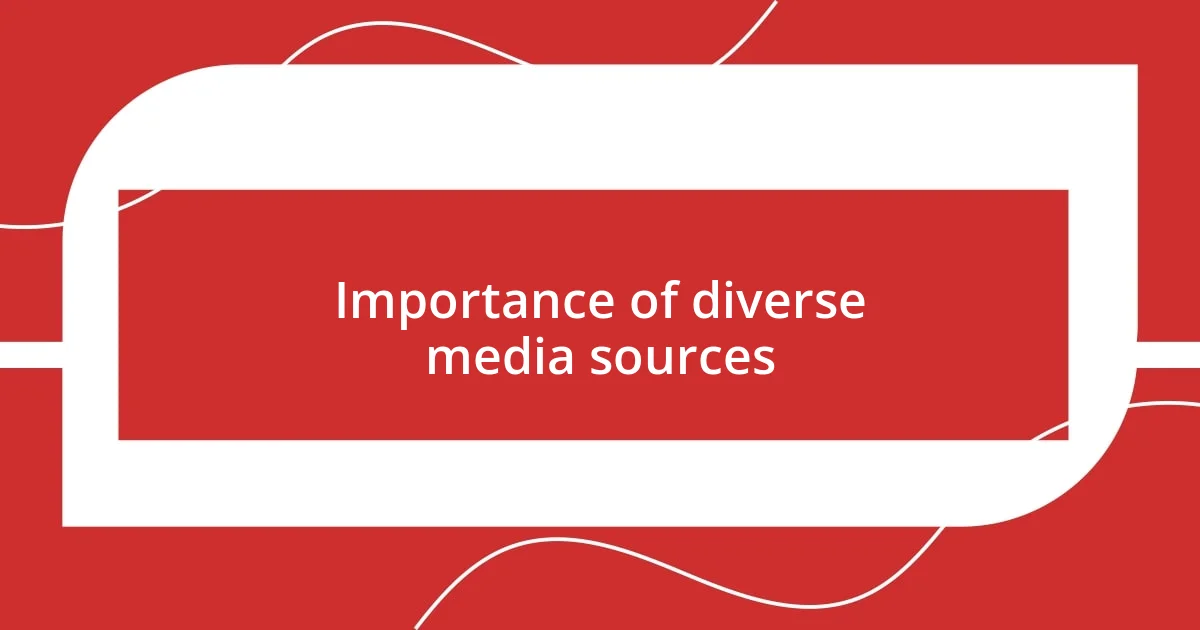
Importance of diverse media sources
Expanding my horizons with diverse media sources has been pivotal in sharpening my understanding of political events. I vividly remember flipping between international broadcasts during a recent election cycle; each outlet added layers to a narrative that I initially viewed too simplistically. This experience underscored the reality that a single source can’t capture the full tapestry of events—context matters, and language can reveal nuances that alter the interpretation of facts.
I’ve often pondered the idea of echo chambers, where we may unwittingly seek confirmation rather than exploration. For instance, after reading an article in German about a controversial policy, I noticed how it handled public reception differently than an English piece, which seemed more focused on political implications. This comparison illuminated how linguistic context shapes perception—not just what’s reported, but how it resonates with each audience. It struck me that engaging with diverse sources cultivates a more rounded worldview and allows for better-informed debates among peers.
When I engaged with social media discussions involving multilingual perspectives, I was amazed by how fervently opinions varied across cultures. I recall a post about climate policy that sparked a heated discussion; some participants approached it from a scientific standpoint, while others emphasized social justice concerns. This experience reminded me that diverse media sources unlock the potential for rich dialogue, as they draw from a wellspring of cultures and experiences that foster understanding and empathy.
| Source Type | Key Insight |
|---|---|
| English Sources | Focus on political implications and opinions. |
| Spanish Sources | Highlight community impacts and grassroots movements. |
| French Sources | Emphasize cultural perspectives and historical context. |
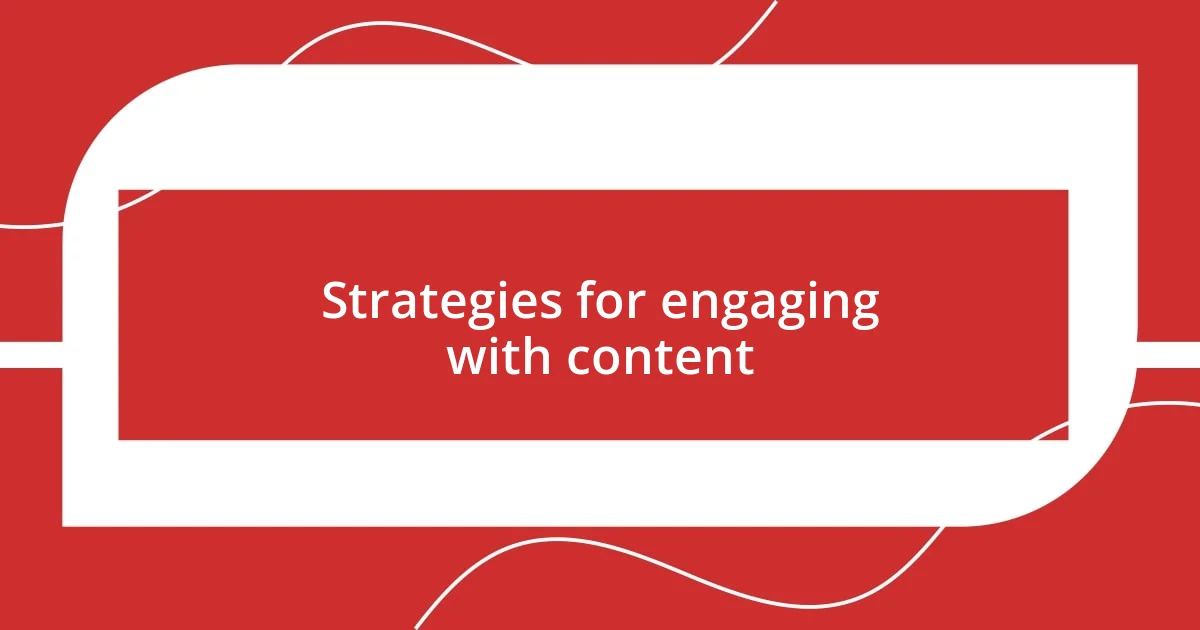
Strategies for engaging with content
Engaging meaningfully with multilingual content requires intentional strategies that enhance comprehension and promote dialogue. For instance, I often take notes while consuming diverse sources, jotting down key points that resonate or spark questions. This practice has led to richer discussions with friends and family as I get to share different perspectives I encounter. I also make it a point to compare coverage of the same event across languages, which really brings to light how narratives shift based on cultural context and audience.
Here are some strategies that have worked for me:
- Active Note-Taking: Jot down insights or questions that arise as you read or watch different sources.
- Create Comparisons: Analyze how various linguistic sources portray the same story, noting similarities and differences.
- Seek Diverse Views: Engage with content from smaller outlets in multiple languages; they often provide perspectives overlooked by mainstream media.
- Join Discussions: Participate in forums or groups that focus on multilingual dialogues, allowing for deeper engagement and learning from others’ interpretations.
- Reflect Emotionally: After consuming content, take a moment to reflect on how it makes you feel and why; this can guide your understanding of different cultural narratives.
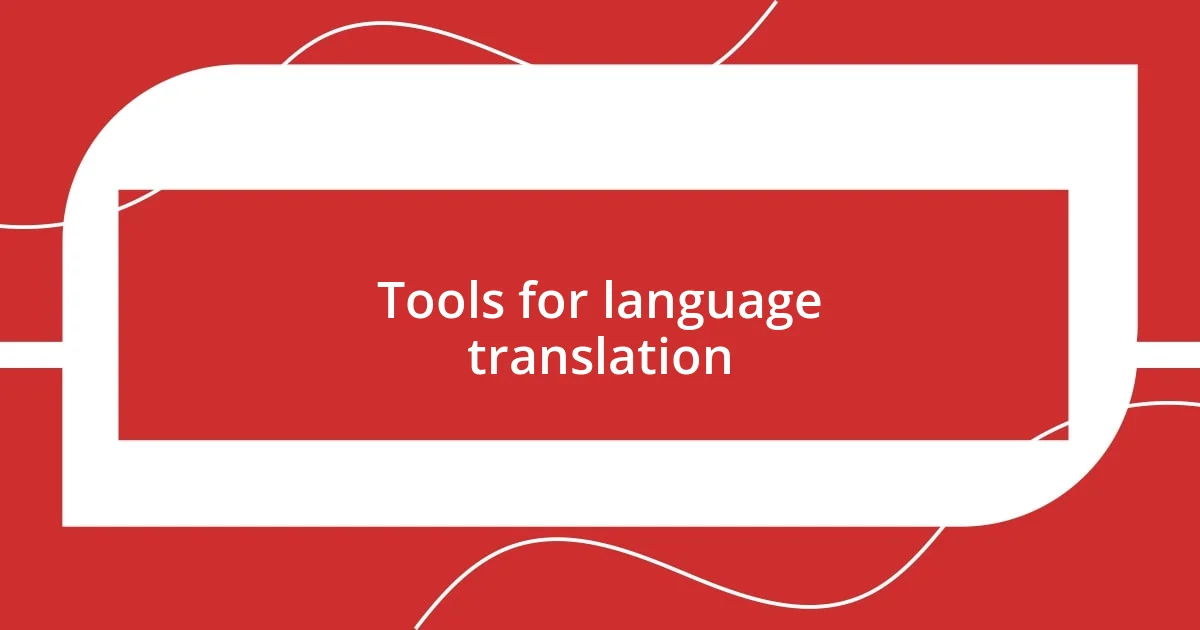
Tools for language translation
Language translation tools have become essential in my journey to navigate multilingual political coverage. I often rely on platforms like Google Translate for quick translations, but I’ve found that the nuance can be lost in literal conversions. For instance, when I translated a political rally speech from Spanish recently, the emotional resonance was diluted, prompting me to seek out native speakers for insights that the software missed entirely.
In my experience, using specialized translation services can yield better results. One time, I decided to try a service designed for translating complex documents. The difference was remarkable, as it maintained the tone and context of the original text. I could feel the gravity of the arguments being presented, and it really made a difference in understanding the political climate in another country.
Sometimes I wonder—how much depth am I missing when I fully depend on automated tools? While they offer convenience, I’ve learned the hard way that engaging with human translators—or even language forums—allows for a richer exchange of ideas. There’s a certain satisfaction in piecing together a translation myself, driven by curiosity and the thrill of discovery. In the end, these tools serve as bridges, but the journey often leads to deeper connections when combined with personal effort and community insights.
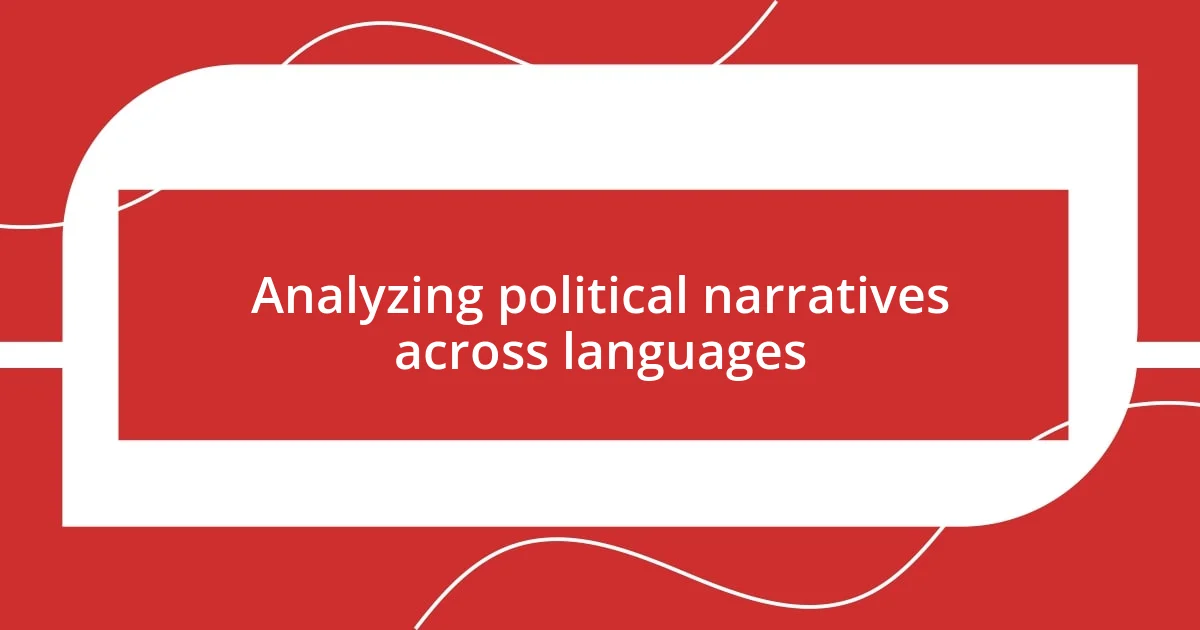
Analyzing political narratives across languages
When I delve into political narratives across different languages, I often find myself captivated by how the same event can evoke strikingly different reactions. For example, I once analyzed an election coverage piece from English and Spanish sources. The English interpretation focused heavily on statistics, whereas the Spanish narrative highlighted personal stories from voters. This contrast made me ponder: how does language shape our understanding of justice or fairness?
I’ve also discovered that nuances can slip through the cracks when exploring political discussions in another language. Once, while reviewing commentaries on a controversial policy, I noticed that an Arabic source emphasized the historical context behind the policy. It struck me how a simple phrase, when translated literally, lost its connotations entirely. This experience reinforced my belief that analyzing political narratives isn’t just about the headlines—it’s about immersing myself in the cultural lens through which those headlines are viewed.
In my opinion, engaging with multilingual political coverage isn’t merely an academic exercise; it’s a deeply personal journey. I often reflect on my feelings after consuming these narratives. For instance, after reading different versions of a foreign leader’s speech, I felt a compelling mix of empathy and outrage based on their portrayal. Those feelings compel me to ask: what drives these varied narratives? Understanding the emotional weight behind the words has become a key part of how I connect with the world around me.
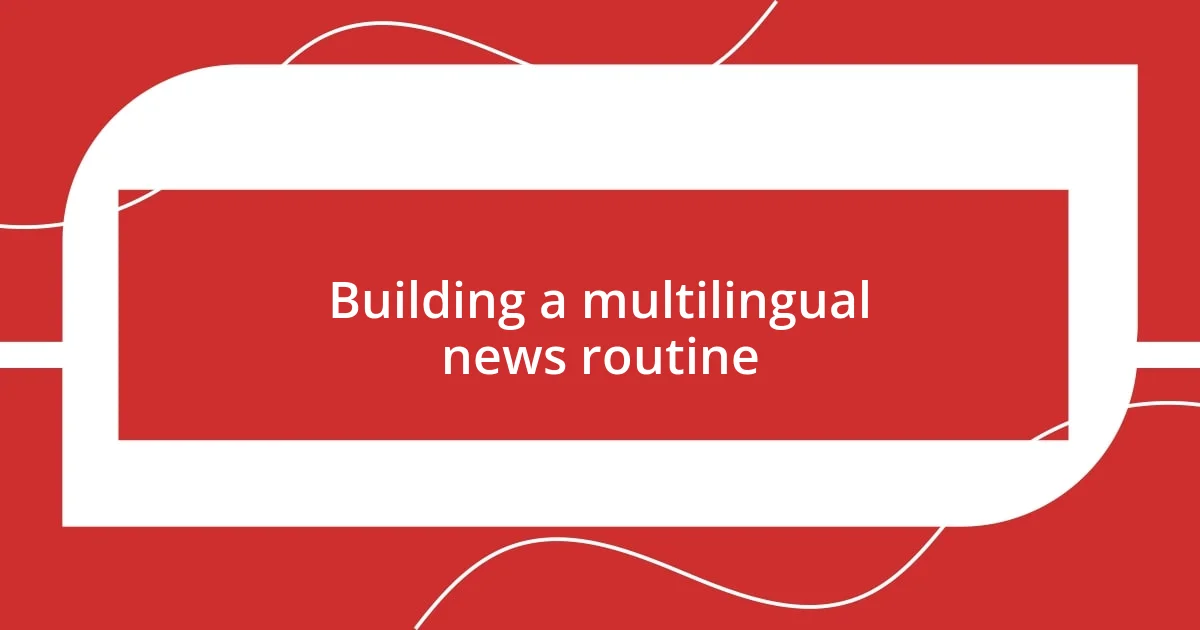
Building a multilingual news routine
Building a multilingual news routine starts with establishing a clear framework for daily engagement. Personally, I dedicate specific times each day to consume news in different languages, rotating between my preferred sources. I find that this routine not only helps me stay informed but also deepens my understanding of nuanced political coverage.
Sometimes, I consider how my language skills influence my news consumption. Just last month, I set a goal to read at least one article in French each day, focusing on issues I was already familiar with in English. This practice challenged me to think critically about how terms and phrases don’t always translate directly and led me to actually take notes on words or idioms that stood out. It’s fascinating how a shift in language can alter my perspective on the same political event.
I also engage with news podcasts in various languages, which has added another layer to my routine. I remember listening to a German analysis of an international summit while commuting, and I was struck by how the commentary reflected local sentiments. That moment made me question: how do regional biases color perceptions in political coverage? This exploration not only enriches my vocabulary but also fosters a more rounded understanding of global issues, melding linguistic skills with a broader geopolitical awareness.
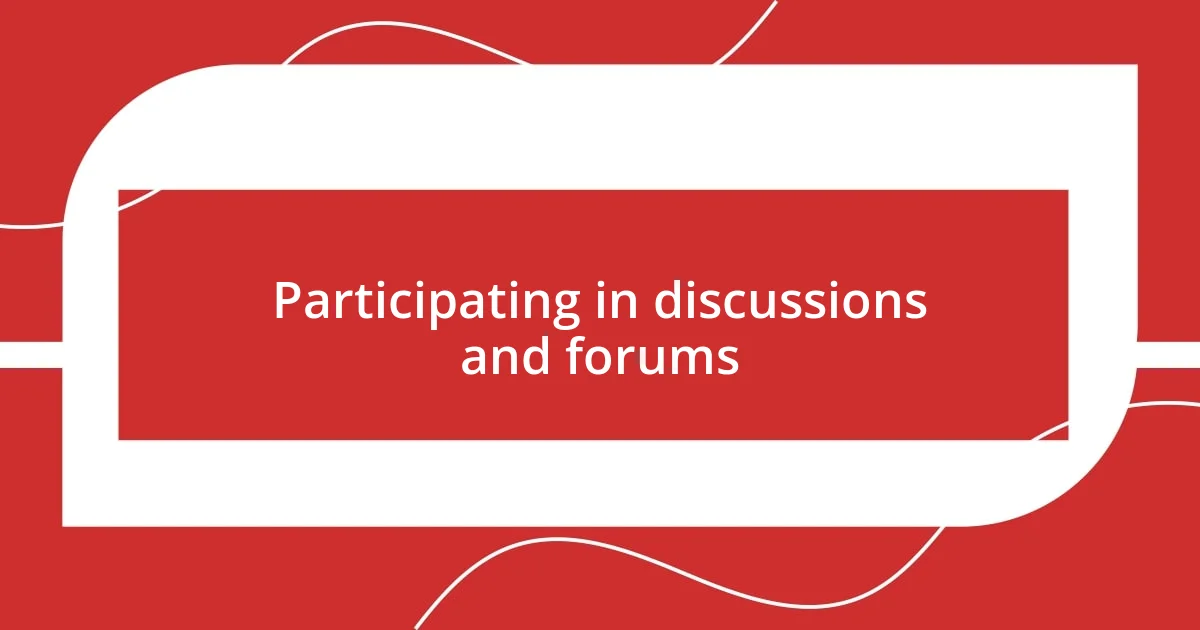
Participating in discussions and forums
Participating in discussions and forums has truly transformed my approach to multilingual political coverage. For instance, I joined an online forum where people share their insights on global politics in various languages. One day, a heated debate erupted over a recent policy change, and I jumped in, contributing my thoughts in both Spanish and English. This experience taught me not just about the differing opinions, but also how language shapes the tone of the conversation—sometimes a gentle phrase in one language can come off as harsh in another.
What I love most about these discussions is the authenticity that comes from diverse perspectives. I remember engaging with a participant from Brazil who shared how their local media portrayed an international crisis. Reading their take made me uncomfortable, yet it opened my eyes to viewpoints I had previously overlooked. It makes me wonder: how often do we truly listen to voices outside our comfort zone? This direct interaction allows me to challenge my biases and encourages a richer understanding of political narratives that I wouldn’t get from one source alone.
Moreover, forums often allow for a deeper exploration of terminology. During one discussion about healthcare policies, I encountered a nuanced term in French that sparked curiosity. After asking for a translation and context, I realized how the language used can influence policy perceptions, almost like peeling back layers of an onion. Engaging with others in this way can be daunting, but the emotional payoff is significant; each interaction feels like a step towards fostering empathy amid the chaotic political landscape. Wouldn’t it be great if more people participated in these dialogues? Each of us has something valuable to contribute.
